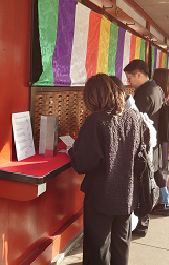
What You’ll Learn in This Article
- Discover the origins and meaning behind Mikuji, the fortune slips found at Japanese temples and shrines.
- Learn how to draw a Mikuji properly and what each fortune means.
- Understand the deeper cultural and spiritual mindset that Mikuji reflects in modern Japanese society.
A Quiet Moment of Prayer, A Glimpse of Fate
Before making a wish or praying for success, many visitors in Japan reach for a small slip of paper known as Mikuji. This quiet tradition, often found at temples and shrines, offers a glimpse into the spiritual habits of Japanese people—blending ancient poetry, modern reflection, and a touch of fate.
What Is Mikuji,Fortune slip?
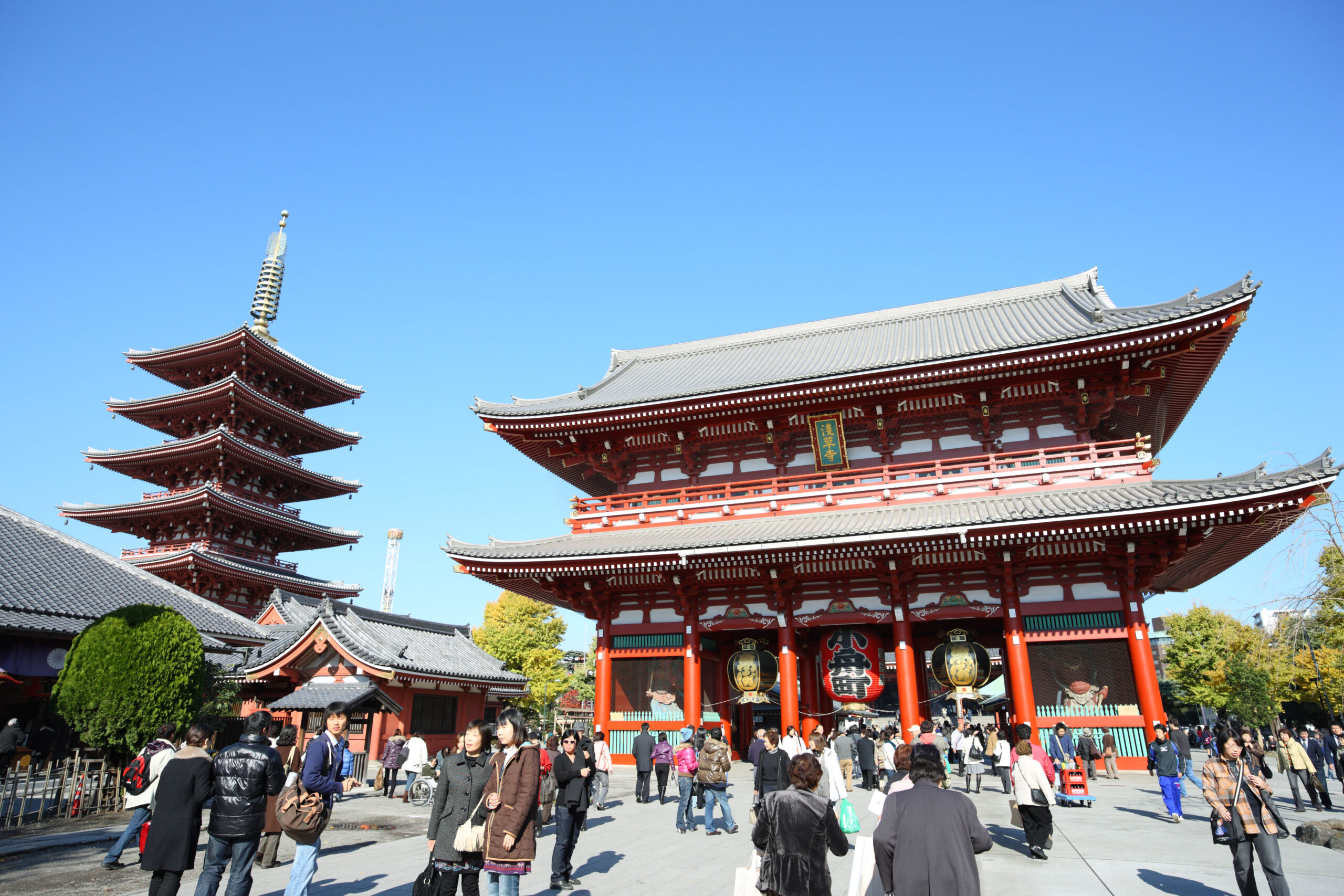
When you visit Buddhist temples or Shinto shrines in Japan, you may come across a traditional fortune-telling ritual known as Mikuji (Omikuji).It’s a small paper slip that reveals a person’s fortune, ranging from Great Blessing to Great Curse.
At Sensoji Temple in Asakusa, Tokyo—one of Japan’s most iconic landmarks—many travelers, both Japanese and international, eagerly try their luck by drawing a Mikuji. For some, the result brings joy and encouragement; for others, reflection and even humility.
The Cultural and Spiritual Significance
Ancient Roots from Enryakuji
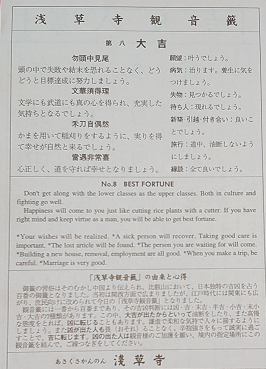
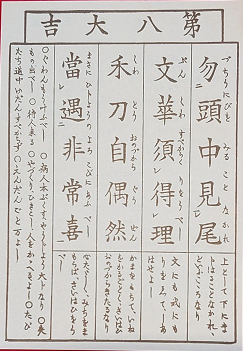
The current format of Mikuji at Sensoji traces its origins back to the Heian period (794–1185).
It is believed that Ryōgen (912–985), the 18th head priest of Enryakuji Temple on Mount Hiei, created a divination system using poems written in five-character quatrains (五言絶句), a classic Chinese poetic form.
These poetic fortunes were not just predictions, but spiritual advice derived from the teachings of Bodhisattva Kannon.Today, Sensoji’s Mikuji still follows this poetic tradition, and the slips also include a modern Japanese interpretation to help visitors understand the deeper meaning.
Drawing a Mikuji is not merely about luck—it’s a moment of quiet prayer and introspection.
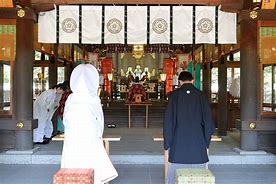
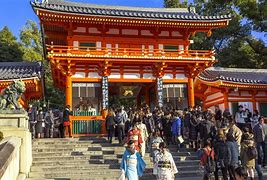
Misunderstandings and Clarifications
It is often said that “Japanese people are not religious.” Indeed, a 2018 survey by NHK asked people, “Do you have a religion you usually believe in?” and the results were as follows:
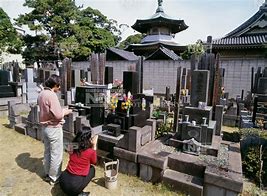
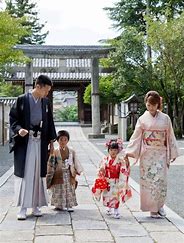
Buddhism: 31% / Shinto: 3% / Christianity: 1% / No religion: 62%
However, this doesn’t fully reflect the spiritual behavior of Japanese people. At the New Year, at weddings, funerals, and children’s rites like Shichi-Go-San, people regularly visit temples or shrines and pray. This illustrates a unique aspect of Japanese culture—where spiritual acts are deeply rooted in daily life, even if not formally associated with religion.
How to Appreciate It Respectfully
If you’d like to experience Mikuji in Japan, here’s how to do it properly:
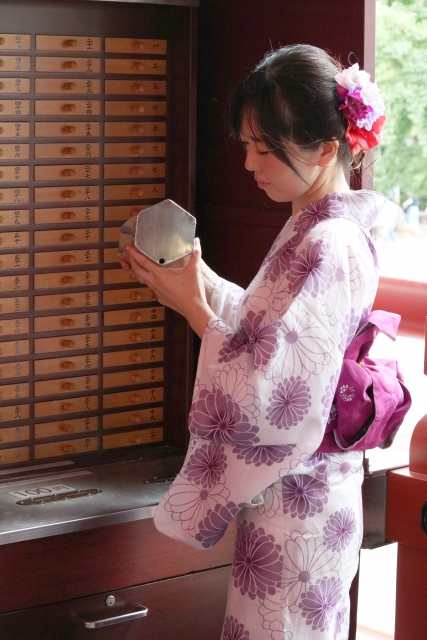
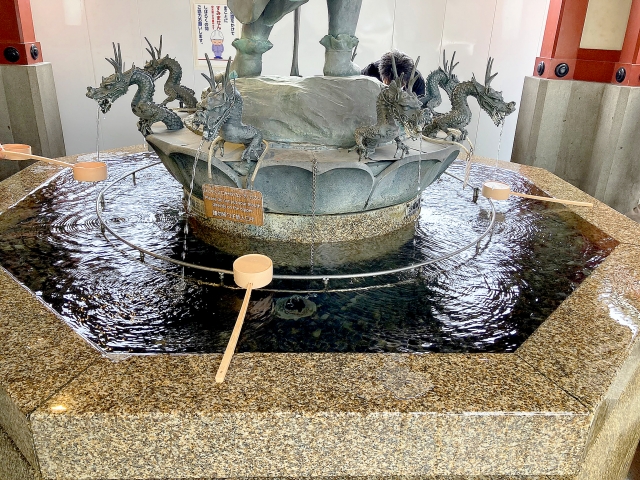
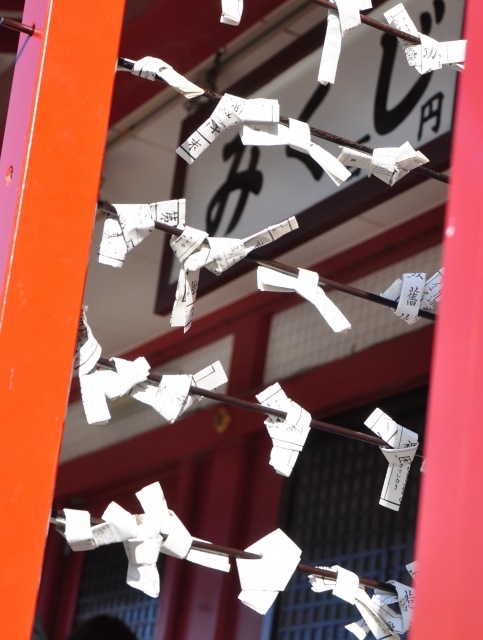
hanging on bar
- Purify your hands at the temizuya (water basin) before approaching the main hall.
- Offer a silent prayer for guidance or a wish from the heart.
- Shake the Mikuji box gently until a stick falls out. It will have a number on it.
- Find the matching drawer and take the Mikuji slip corresponding to that number.
- Read the fortune, which will be one of seven levels (e.g., 大吉, 吉, 凶).
- If you receive a bad fortune (凶), tie the paper to a designated metal rack provided by the temple—not to trees or plants.
💡Some temples offer fortunes in English or include pictures/icons for easier understanding.
Final Thoughts
Mikuji is more than just a traditional souvenir—it’s a quiet, reflective moment with something larger than ourselves.It represents the subtle religiosity embedded in Japanese culture: a tendency to rely on spiritual guidance in times of hope, fear, or transition.
Even if one doesn’t identify with a particular faith, the act of drawing a Mikuji and pausing to read it is a meaningful way to connect with the cultural and spiritual heartbeat of Japan.
We Japanese have many customs related to Buddhism and Shinto.
Share Your Thoughts
Have you experienced something similar in your own culture?
Your reflections are welcome.
💬 Jump to the comment section


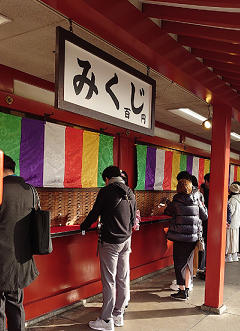
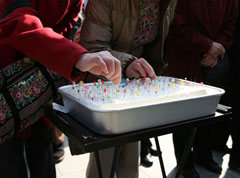
Share Your Perspective